This post may contain affiliate links. Please read our disclosure policy.
Zaatar croissants are a wonderful worthy project! Golden, flaky pastry filled and topped with zaatar. Follow my step-by-step instructions to make it all happen!
The first morning of my first visit to Lebanon, two years ago now!, a beautiful platter of pastries was presented at our table for breakfast. I wasn’t surprised to see French pastry in Lebanon—because the country was a French protectorate for so many years, French culture and language are part of who we are.
And if that means more croissants, I’m good with it.
What did surprise me was when I pulled apart the ethereal pastry to find a thimble of za’atar filling in the middle. The za’atar was subtle, very unlike the way we heap it onto our man’oushe, our za’atar flatbreads, oily and earthy and delicious. And there was no indication of the za’atar on the croissant’s exterior, no hint that this brilliance was coming my way.
I was giddy over the za’atar croissants to the point of plotting to ask to spend some time in the hotel kitchen there at the Four Seasons Beirut, to look into that and any other brilliant ideas they may have, while I was in town. I wish I had, but time was tight and it was a Mary Poppins-spit-spot sort of schedule we were keeping (there were cousins to hug, windy monasteries to visit and ancient ruins to touch).
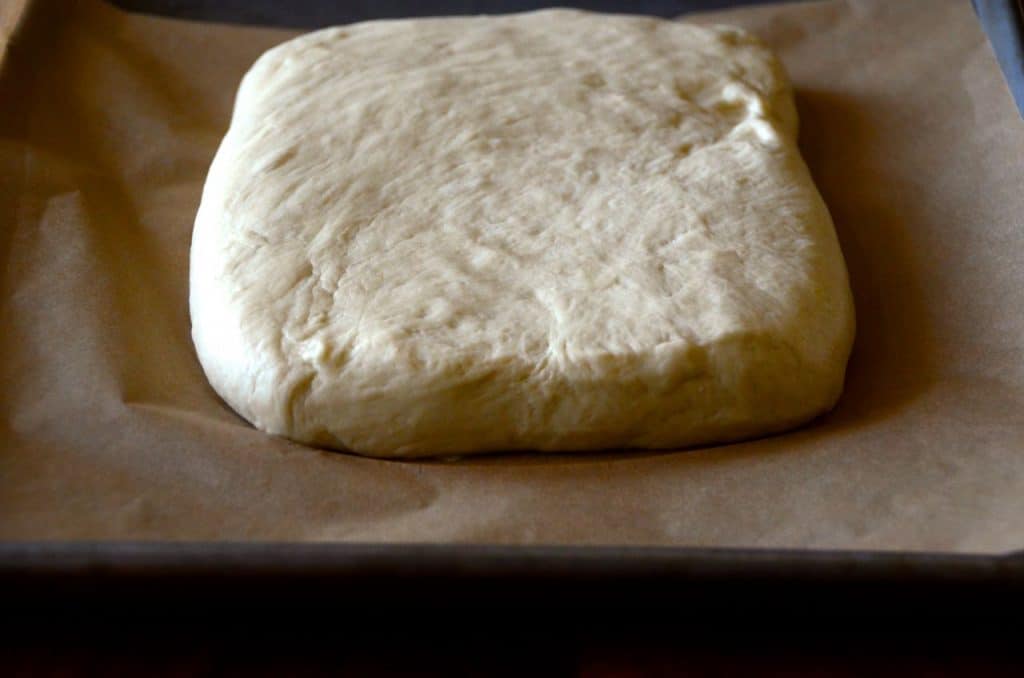
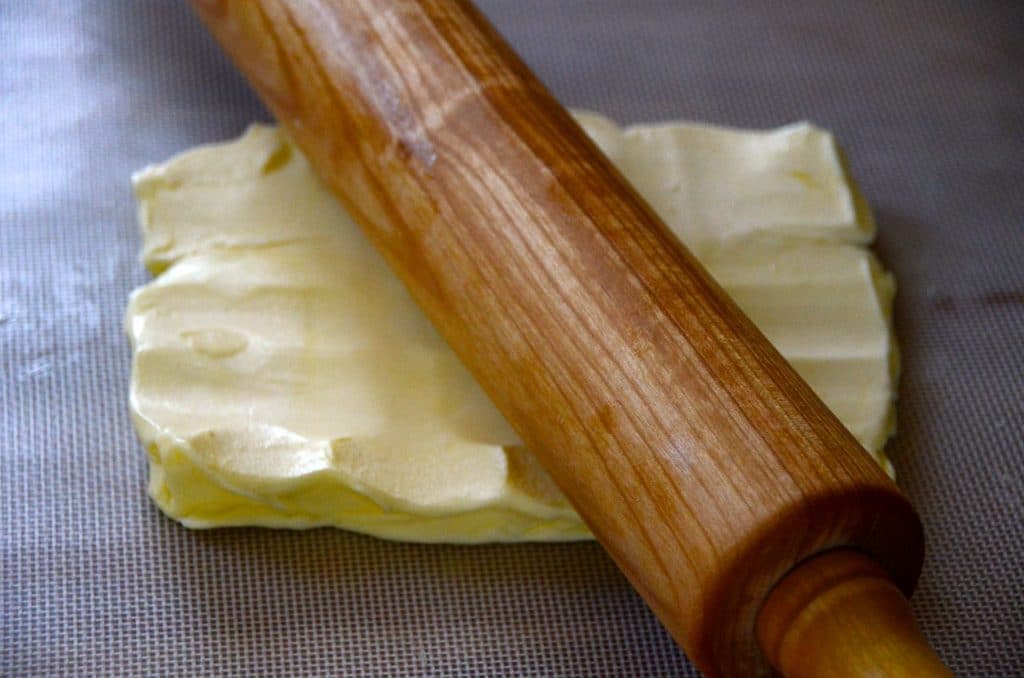
The next day we strolled past a Starbucks in the city centre, and went in to see what was what. Instead of lemon pound cake or cheese Danish, there were za’atar croissants. I ordered and ate before I even took out my money to pay.
It was a Starbuck’s croissant, not special, but the unusual presence of the za’atar elevated the pastry and gave me yet another iteration of it to take in, and the idea that za’atar croissants must be de rigueur in Lebanon, not just a Four Seasons thing. Then, back home, I saw the za’atar croissants on the menu at Shatila in Dearborn, and understood.
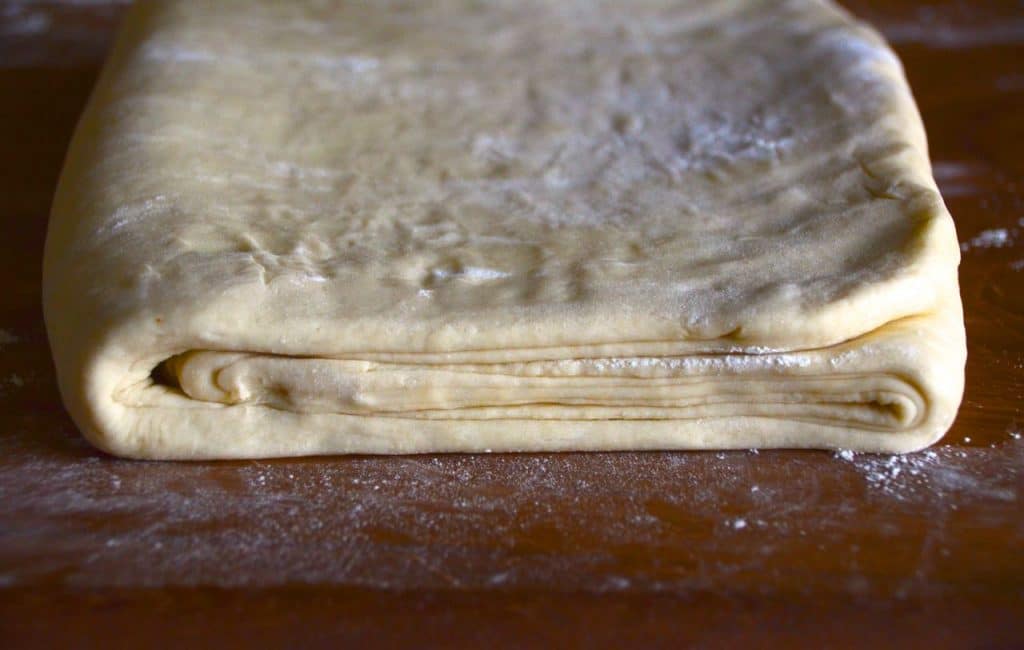
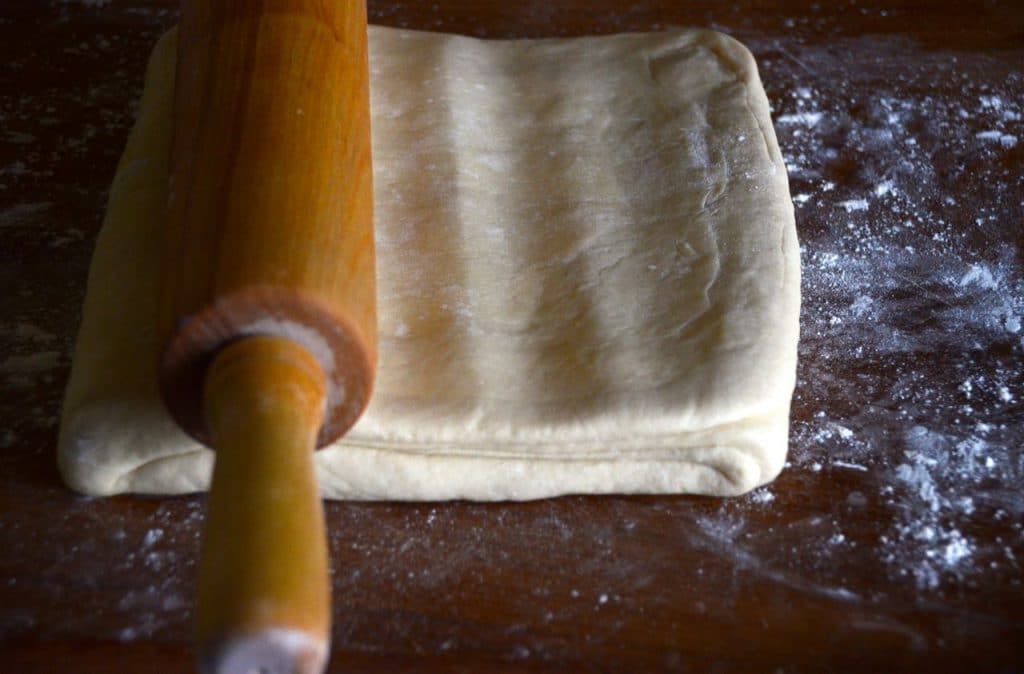
As I was finishing up work on the manuscript for my cookbook recently, Geralyn asked me what I was going to do with myself after I turned it in. Clean the kitchen? I said. But I’d really been thinking about the freedom I would have, during that deep breath after finishing, for a baking project. I’ve had the zaatar croissants recipe on my mind for a long time, and thought if I could just get my book done, at least the first draft, I would allow myself the time to make za’atar croissants (and take their photos, and write their recipe, for all of us).
This is one in a long line of pastry projects that consume me as much as I consume them. There were these cookies, this tart, this cake, and others that never saw the light of blog-day for such complexity that a girl had to ditch her camera and just focus.

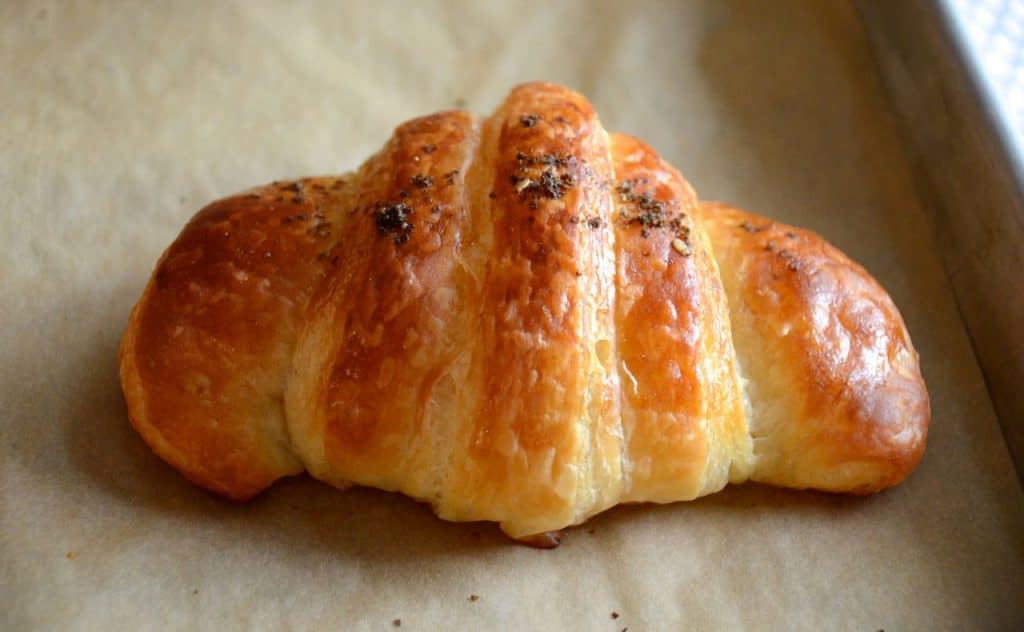

I can’t say I didn’t wonder how you might feel about the zaatar croissants recipe, too. Not for the eating, of course, but for what’s required in the kitchen. I also wondered how I could possibly share the technique when my work is so very solo, not even a mama or a sister around to help demonstrate.
But like anything that one allows her mind to wander around and into, like leaving a job to go to culinary school, or making that trip to Lebanon, or writing a Lebanese cookbook and bringing Lebanese za’atar to you…it was going to keep humming its little za’atar tune in my ear until I listened. And shared.
In this Recipe

Za’atar Croissants Recipe
Ingredients
- 13.5 oz (3 sticks plus 3 tablespoons) European-style butter, very cold
- 1 3/4 cups whole milk
- 1 1/2 tablespoons instant yeast
- 4 1/2 cups unbleached, all-purpose flour
- 1/4 cup granulated sugar
- 2 teaspoons kosher salt
- 1 large egg
- 1 teaspoon water
- 1/4 cup za'atar
- 2 teaspoons extra virgin olive oil
Instructions
- In a small saucepan, melt 3 tablespoons of the butter over medium-low heat.Add the milk and warm to 85 to 90°F.
- In the bowl of a stand mixer, whisk the yeast into the butter-milk mixture. Add the flour, sugar, and salt and knead with the dough hook on low speed until the dough forms, 2 to 3 minutes. Increase the speed to medium-low and knead the dough for another minute, or until the dough is no longer sticky, and is smooth and soft to the touch. Remove the bowl from the mixer and cover it, with the dough in it, with plastic wrap. Set this aside to rest for 30 minutes.
- Place a piece of plastic wrap on the counter and transfer the dough to it. Shape the dough by patting it with your hands into a 10- by 7-inch rectangular block about 1 inch thick. Wrap the dough securely in the plastic (use an additional piece of plastic if needed to cover the dough completely). Chill on a flat surface, or pan or plate, in the refrigerator for 2 hours.
- Meanwhile, make the butter block. Line the counter with a sheet of plastic wrap and arrange the cold butter in a square-like shape (cut it if needed; if using sticks, line the three up in a row). Hold a rolling pin by the handles and press the length of the pin with strength into the butter to meld the pieces together and flatten it into an 8-inch square that is ½ to 1-inch thick. Use your hands or a bench scraper to help shape and smooth the sides of the butter, keeping a towel handy to dry your hands as you go. Wrap the butter tightly in plastic, using another sheet if needed, then smooth the butter all over. Chill the butter on a plate in the refrigerator for at least 45 minutes.
- To laminate the dough, place the chilled dough in the freezer for 30 minutes. On a lightly floured counter, roll the dough to a 17-by 8-inch rectangle. Unwrap the cold butter and place it in the center of the dough rectangle. Fold the long sides of the dough up over the butter to meet in the middle over the butter, and pinch the seam tightly together. Use your hands and the rolling pin to seal seam. Pinch the dough together on the open sides and use the rolling pin to seal and flatten the side seams. Roll the packet lengthwise into a 24- by 8-inch rectangle, starting by gently pressing the rolling pin into the dough across the packet to get the rolling started. Use your hands to shape the dough to keep the edges straight and the corners as squared off as possible. Fold the rectangle like a business letter in thirds to form an 8-inch square. Wrap the square tightly in plastic and chill for 30 minutes.
- Unwrap the dough and transfer it to the large, lightly floured counter space. With the opening of the square facing to the right like a book, roll it out again with the long side facing. you, starting by pressing with the pin across the dough, into a 24- by 8-inch rectangle. Fold the dough like a business letter into thirds to form an 8-inch square. Wrap the dough tightly in plastic and chill for 2 to 24 hours.
- To shape the dough, you’ll need a large work surface. Place the chilled dough in the freezer for 30 minutes. On a lightly floured counter, roll the dough toan 18- by 16-inch rectangle, with the long side facing you and the edge of the counter. Use a ruler and a pizza cutter or sharp knife to cut the dough in half lengthwise so there is an upper and lower rectangle in front of you. To cut triangles to shape into crescents, measure and mark 3-inch spaces along the top long side each rectangle of dough. Along the lower long edge of the rectangles, move in 1 1/2 inches, mark it, then mark every 3 inches along the edge. Cut the dough in triangles from the top marks to the lower marks. Save any scraps from the sides of the dough.
- Line 4 sheet pans with parchment. In a small bowl, combine all but a teaspoon of the za’atar with the olive oil to create a lightly dampened, but not wet, mixture. Cut a 1/2-inch slit in the middle of the short side of the dough triangle, and gently stretch the sides apart. Gently stretch the triangle from the long tip end as well. Place 1/2 teaspoon of the za’atar just under the cut on the triangle. Fold the short edge over the za’atar, then roll it up half way. Stretch the tip of the triangle again gently, and finish rolling the crescent up. Finish with the tip of the triangle underneath the crescent and place it on the parchment-lined pan. Curl the right and left sides of the dough together to form an arched crescent. Repeat with the remaining triangles, placing 6 on each sheet pan. Cover lightly with plastic wrap and letthe croissants rise until they are doubled in size, 2 1/2 to 3 hours.
- To bake the croissants, preheat the oven to 425°F. Whisk th eegg with a pinch of salt and a teaspoon of water to make the egg wash. Lightly brush the tops of the croissants with the egg wash, and sprinkle a little line of za’atar over the top. Baking one sheet pan at a time, place a pan in the oven and reduce the temperature to 400°F. Bake for 8 to 12 minutes, or until the croissants are golden brown. Cool slightly before serving.
Notes
Croissant Method Summary
To make the croissants’ flakey layers, the dough is “laminated.” This means a pliable block of butter is wrapped and sealed inside of the dough, which is then rolled out in to big rectangles and folded several times, chilling at length in between to keep the butter from melting into the dough. Long triangles are cut from the dough, filled with za’atar, rolled up, and then left to rise before baking.To use the Dough Scraps
Butter a muffin tin. Press together then roll the croissant dough scraps into a rectangle. Brush with melted butter and sprinkle with cinnamon sugar. Roll this up like a jelly roll, divide and cut into several pieces. Place the buns in a buttered muffin tin, rise for 2 hours. Bake at 425°F for about 7 minutes or until golden brown.To store the croissants
Store the croissants in an airtight container in the refrigerator for up to 3 days. To reheat, place the croissants on a parchment-lined sheet pan in a 200°F oven for about 5 minutes. Freeze the croissants in freezer bags or an airtight container for up to 6 months. Warm from frozen or thaw first. The croissants can be frozen before rising after they’re shaped. They’ll need an additional half-hour of rising time, about 3 hours, before baking.Nutrition
Nutrition information is automatically calculated, so should only be used as an approximation.
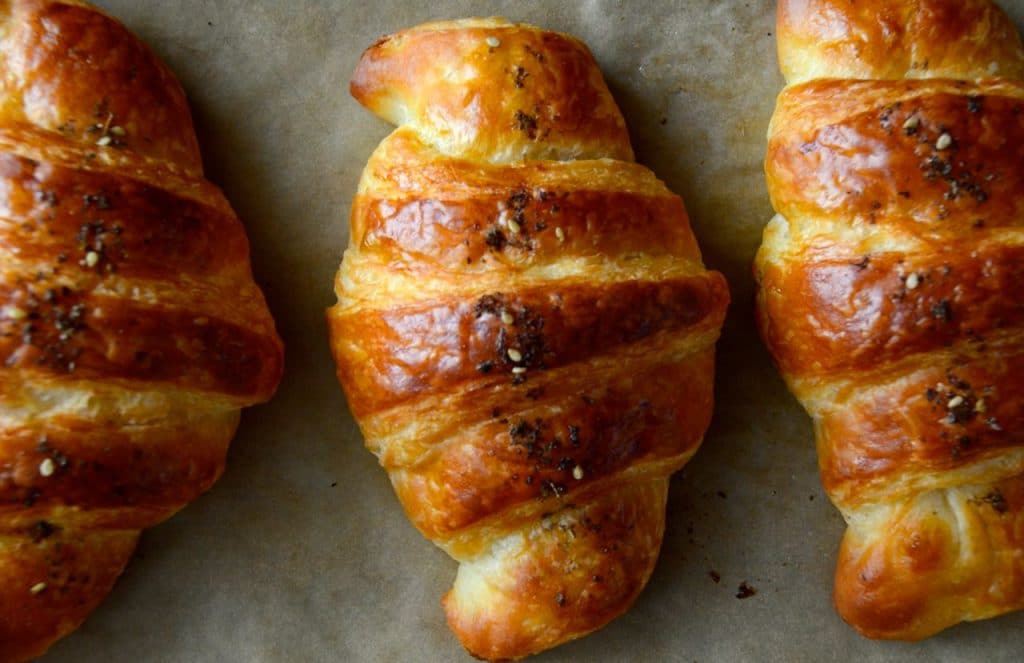
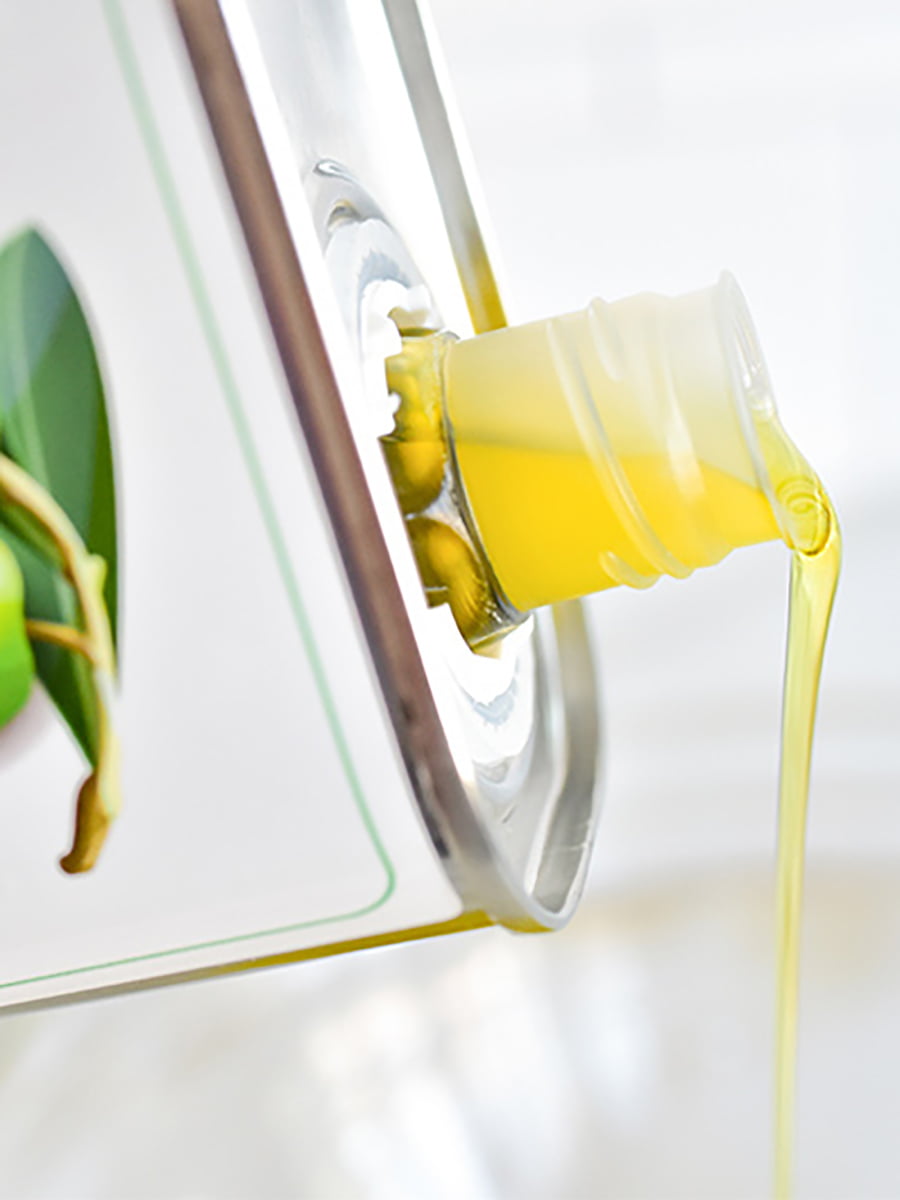
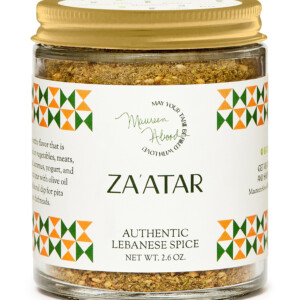

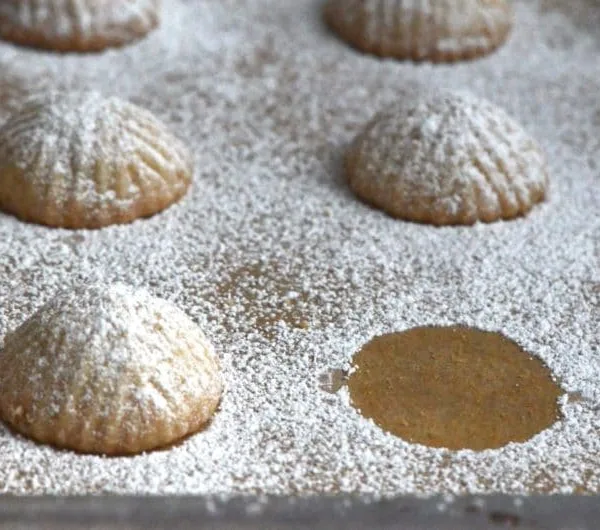
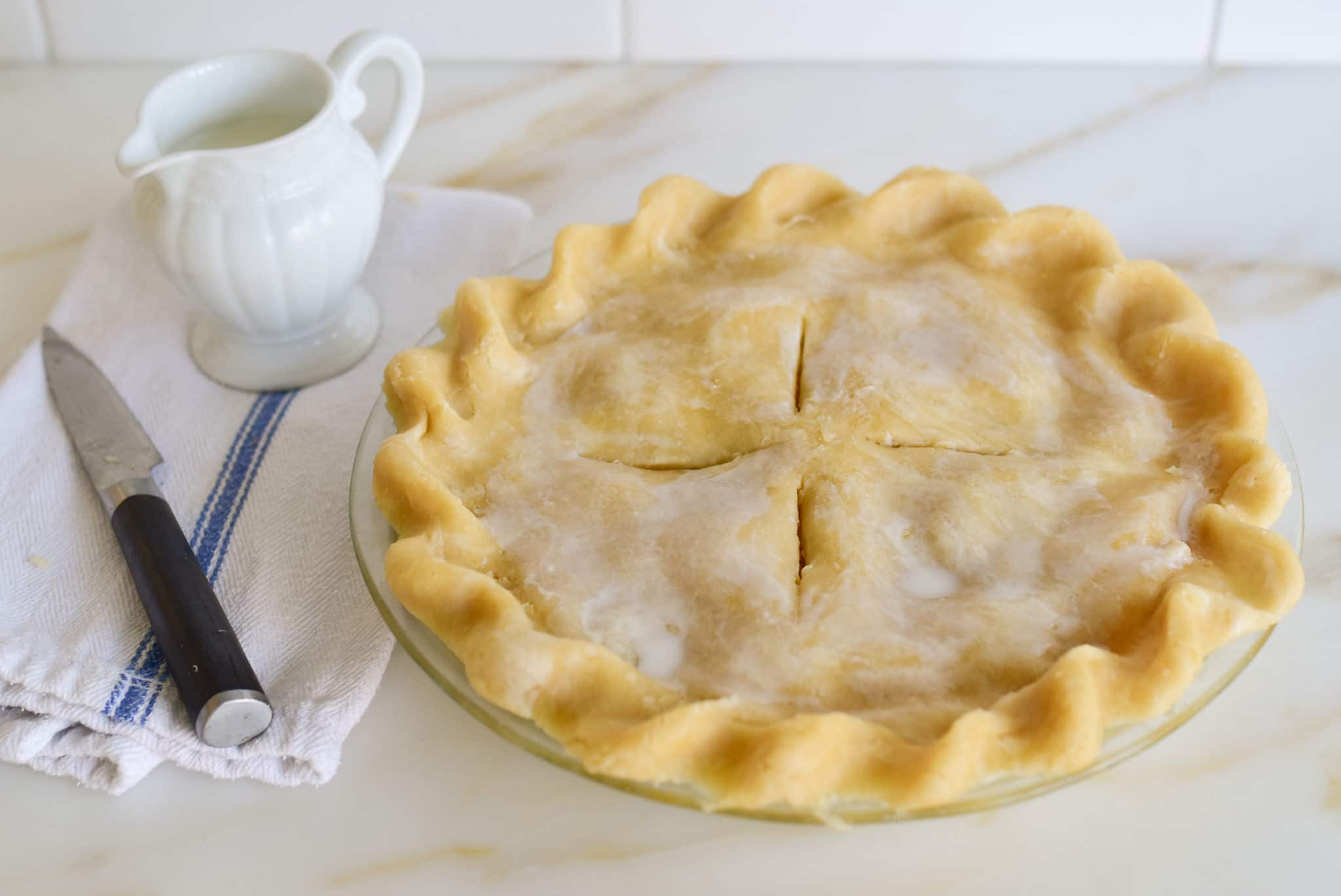








These look great. Thanks for the helpful lamination tutorial. I have the day off and plan to try these out. How much sugar do I use? it says 1/4 granulated… I assume 1/4 cup?
I’m so glad you’re going for it Diana! Yes, 1/4 cup, sorry about that–fixed!
So beautiful! Honestly canNOT wait to try this recipe!
Thank you! I look forward to hearing how you like them!
Where’s the picture of the cinnamon buns? Those must be something else as well — and their made from the scraps!
You know it Rosemary! They’re delicious…
They look delicious. I love zaatar . I usually make this when I have company but I buy the frozen croissants … No time to make my own .
Maybe you could sprinkle some za’atar on the frozen ones before you bake them. Even though there won’t be any inside, a dusting would be nice!
OMG, I love Za’atar Croissants! Haven’t eaten them in 20 years! You reminded me of my childhood. Will definitely try this recipe. Thanks for your amazing recipes!
From your childhood? How great is that?! I hope you do try them and let me know how it goes! Thank you!
Maureen,
These look like WOW…….Is it hard to make?
Marylee
Marylee, it’s more a matter of time and staying focused on the instructions. They’re really worth it! Let me know if you give it a whirl!
Oh these look great. Funny you say because i am just making zataar flat breads in my oven and was thinking about how much I love zataar since I discovered at a recent visit to Israel. I am also in love with croissants and this is definitely on my next breakfast menu.
Ohhhh they sound delicious, your flatbreads! I hope you do make the za’atar croissants, so good!
One more note re Za’atar: Just like nuts and raisins, I now always have a stash of Roasted Garbanzo beans with Za’atar at home – quick to put out for visitors. Also, as a house gift, I wrap a jar of the roasted g.beans aside a jar of Za’atar with your recipe to hand to host or hostess. They love it!
How great, Toni! I love the idea of keeping a jar around as a gift!
I should have asked if you needed me to sample any of the items you were making/baking in your newly found “spare time.”
Sampling is in order!!
Maureen, Since you shared the Za’atar roasted Garbanzo recipe quite a while back, Za’atar has become a favorite condiment. Love it! The taste of Mediterranean! Love this idea of enrobing the flavorful herb mix within croissant. Thank you. XO Toni A.
It is SO the taste of the Mediterranean, Toni! And so delicious with the croissant. I’m glad to know you are a za’atar devotee now too! xxx.